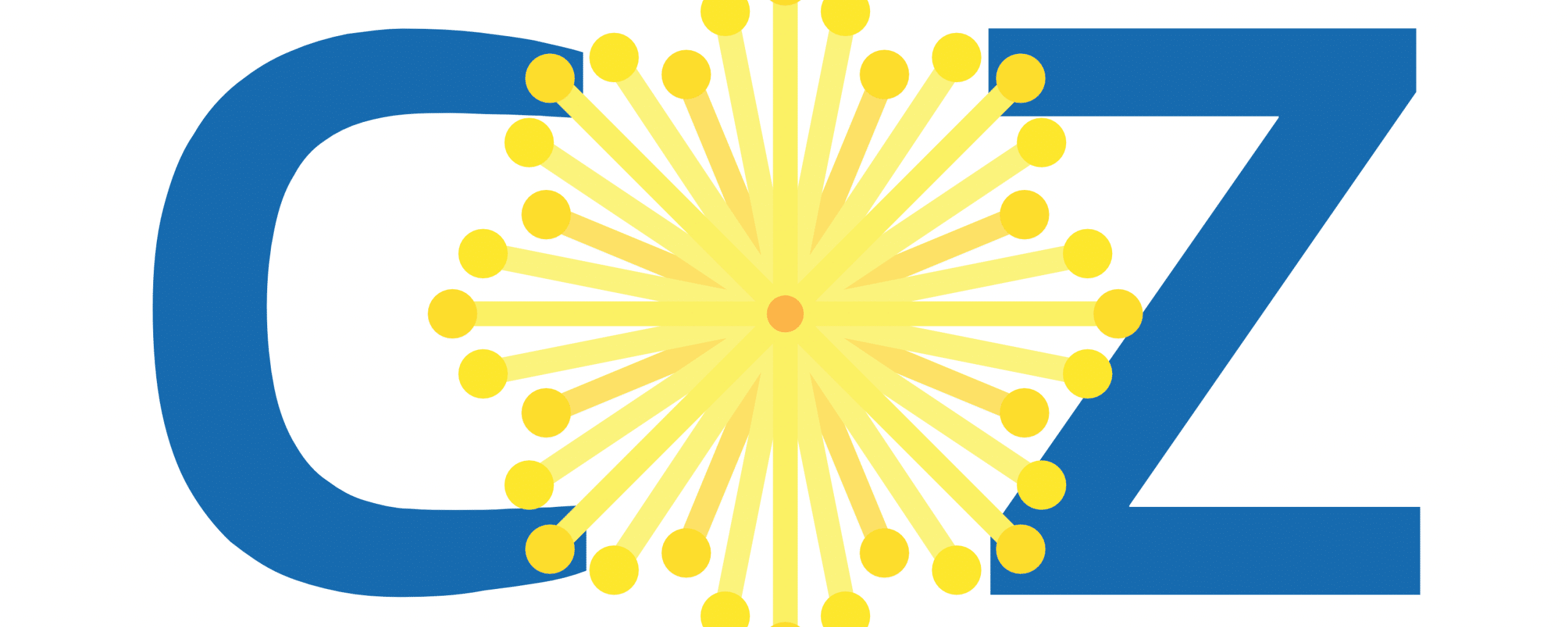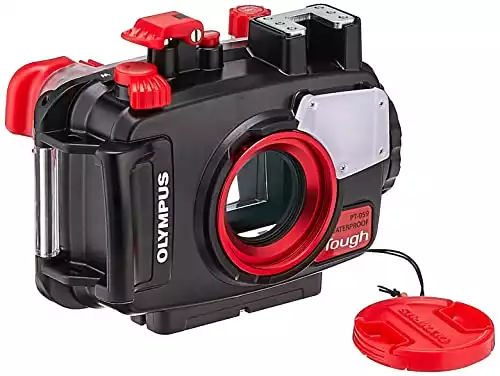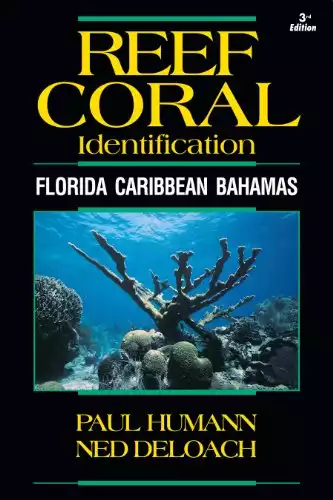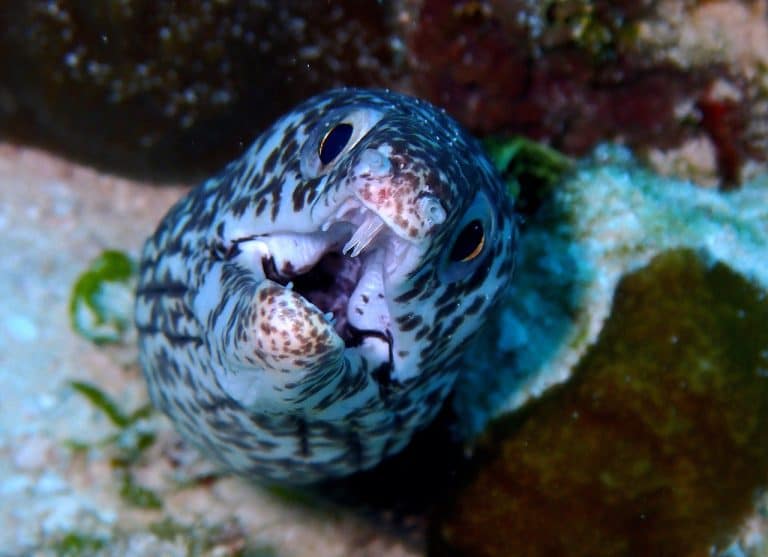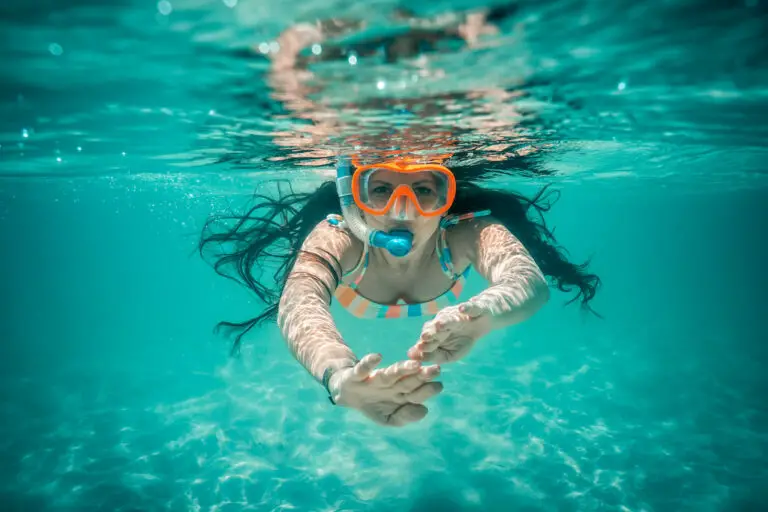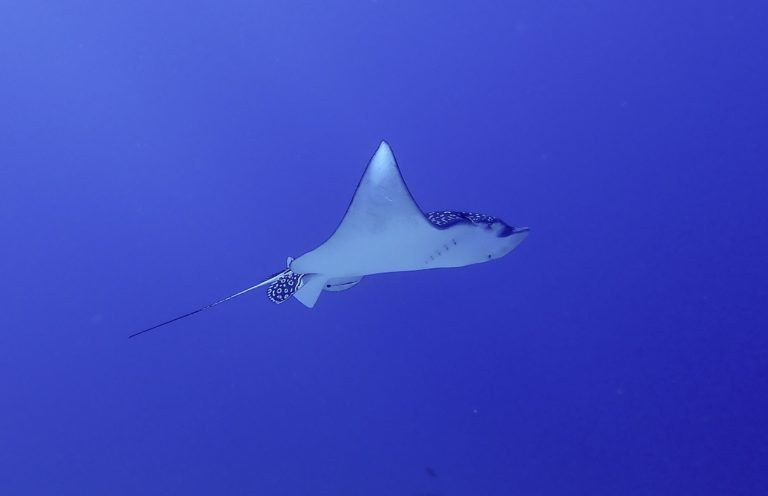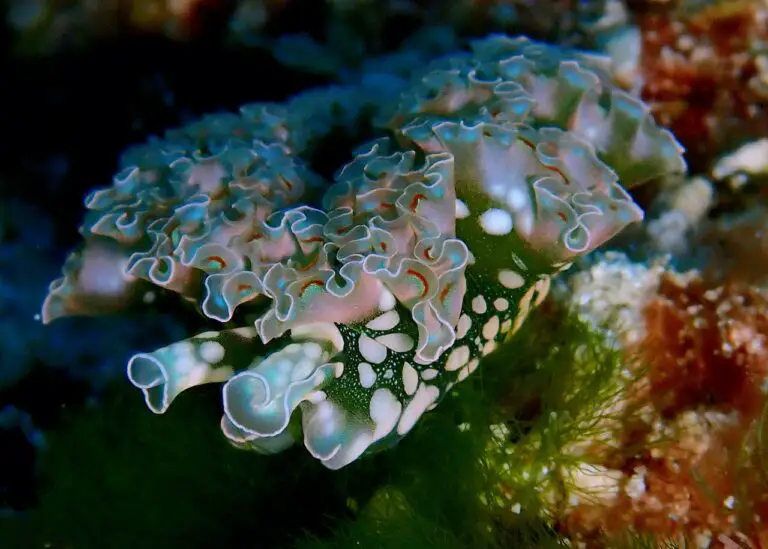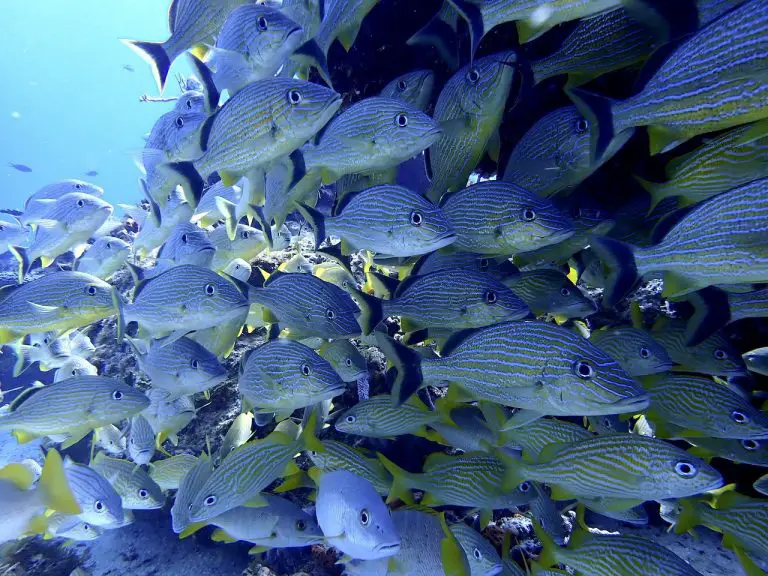Cozumel Marine Life – Sea Urchins, See But Don’t Step
The first time I saw the chunky stripes and central star of a slatepencil urchin (Eucidaris tribuloides) while diving in Cozumel, it looked like kind of like a tiny, old-fashioned naval mine, nestled in the lettuce coral along the outer Palancar reef.
For some reason, I thought of the word “sputnik.”
My BF/dive buddy and I were fascinated with slatepencil urchins after that.
For a time they were our favorite Cozumel macro critters to look for on our dives (of course making up a dorky and crude “bomb exploding” hand sign to use with each other when we did.)
Consulting my marine life ID bible, the Reef Creature Identification: Florida, Caribbean, Bahamas book, I found out it’s called a slatepencil urchin, a lesser-seen but certainly not rare urchin species found in the Caribbean.

Like most new finds, it sparked curiosity to learn more, and find out where this funky little urchin fit in among some of the other common sea urchins and related echinoderms you can find when snorkeling or diving in Cozumel.
What Are Echinoderms?
Like the basket stars and sea stars featured in this previous post, sea urchins are also in the Echinoderm phylum, basically characterized by “spiny skin” (Greek) and some variation of a 5-sectioned or segmented body.
Sea Urchins themselves are further classified in the Echinoidea group, which comes from the Latin for “spiny.”
And as you’ll see, most animals in this classification have lots and lots of spines.
Long-Spined Urchins in Cozumel
The most common sea urchin you’re likely to see here, whether you’re diving or starting out with snorkeling in Cozumel, is the long-spined urchin (Diadema antillarum).

As its name implied, this urchin has long spiky spines that often poke out from behind rocks and coral, and provide a protective shield for the animal’s main body.
These spikes make this somewhat everyday and slow-moving marine critter one of the more hazardous marine animals to encounter here.
Swimmers and snorkelers need to be especially careful, as the long-spined urchin is a common inhabitant of shallow areas, namely some of the rocky and uneven beach and pier entries that are typical to the west side hotels and beach clubs – and that also make for the best snorkeling spots.
Brushing up against or fully stepping on a sea urchin can potentially ruin your day.
According to Divers Alert Network (DAN) accidents and injuries involving sea urchin spines are very common, but not life-threatening. Most urchins do not have any sort of venom or anything, but the spikes can create multiple puncture wounds, and yet the spikes are also fragile, making them very hard to remove cleanly.
As noted in the recent post about beginner snorkeling in Cozumel, be advised to wear water shoes when walking in shallow water here, whether you plan on using fins or not.
If you’re a diver, just use the same booties you have for your dive kit.
If you dive with full-foot fins, or you don’t dive at all and don’t own a pair of scuba booties, just head over to Amazon and pick up a pair, something like these with a tread on the bottom.
This is also a perfect time for me to plug an affiliate link to a cool buy I made this year: You might consider investing in a great pair of versatile, water-friendly travel sneakers like these quality shoes by Ryka that can be worn right into the water.
All three of their shoe styles are considered “all-terrain” – including full submersion in water. So they should be perfect for sharp rocky shorelines (and accidental brushes with sea urchins), and then without even changing, back walking around downtown Cozumel to see the sites, and even out to dinner. All with one light, quick-drying, packable and cool-looking shoe. (I’m partial to the new Canyons. It sounds like they take a while to deliver, though, so this is something to order with some time to spare before your next trip…wherever you go.)
Cozumel’s Reef Urchins
Another sea urchin I see all the time – but only when scuba diving – is called, simply, the Reef Urchin (Echinometra viridis).
According to an abstract from the Journal of Experimental Marine Biology and Ecology, the reef urchin has become one of the more dominant sea urchins in the tropical western Atlantic region, taking over for some of the long-spined urchins’ decline.
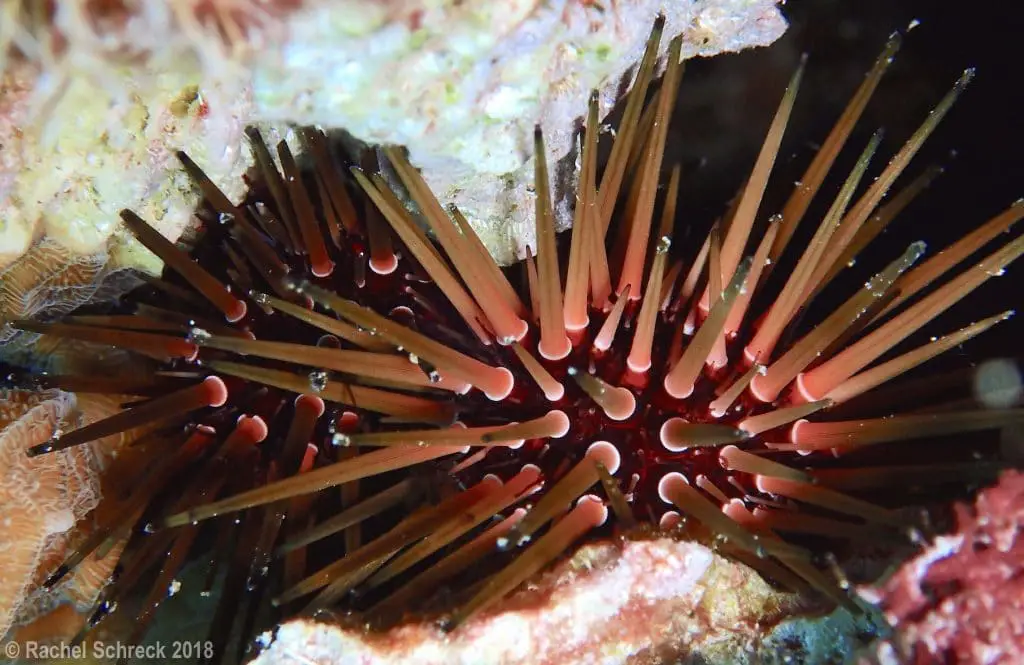
Reef urchins are pretty little things, with a deep red body, and amber spikes, with some blues and greens sometimes visible at the base of each spike.
Like the slatepencil urchins, the reef urchins also tend to tuck into outer reef lettuce coral patches, and other nooks and crannies of the various coral reefs.
I have only occasionally seen them in a more exposed location, though the same journal article indicates that reef urchins often move out at night to graze along the reef and feed on algae. Reef urchins may curtail their nighttime algae control during full moon phases, as the added light could make them vulnerable to attack by predatory fish (including – you guessed – aggressive little damselfish).
It’s tough at first to get good pictures of the reef urchins due to their tendency to hide, so don’t push it and risk getting too close to the coral and damaging anything.
Once you know what you’re looking for, and are patient, you’ll start to see more and more of them and, inevitably, you’ll find some that are a little more visible.
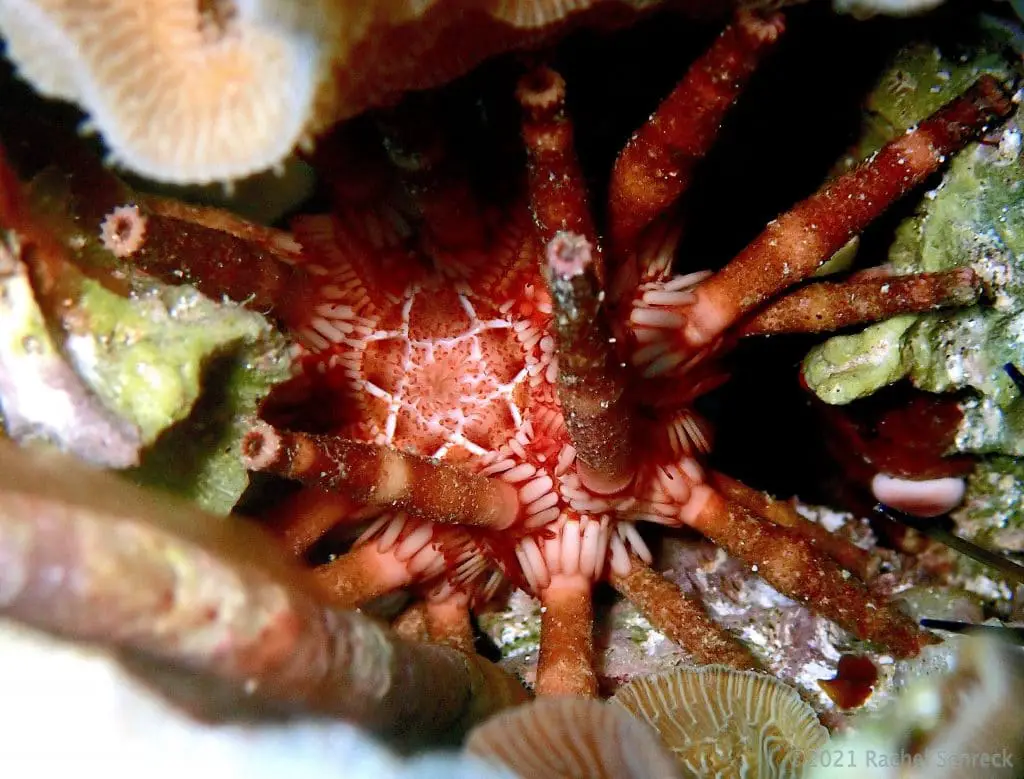
Slatepencil Urchins in the Caribbean
As mentioned above, slatepencil urchins are pretty common in Cozumel, too, though they’re not quite as abundant as the reef urchins.
The coolest thing about these echinoderms is the 5-sided ‘star’ shape that naturally forms in the center of its body.
It is right in the middle, though often not exposed. The urchin’s spikes seem to radiate out from there.
This photogenic combo is why it inspired this month’s newsletter feature, as well – in honor of the “stars and stripes” of July 4th, and the shape reminiscent of Independence Day fireworks.
Magnificent Urchin is a Real Cozumel Treat
From my experience of only seeing two of these otherworldly creatures in all my years and dives in Cozumel, it is a rare treat indeed to come across this urchin – one that could be a UFO from outer space.

The Caribbean Reef Creature Identification manual also appropriately lists it as the “magnificent urchin” (Astropyga magnifica).
Like its cousins, the magnificent sea urchin is covered in spines and has a 5-segment geometry.
Listed as occasional to rare in Cozumel/the Caribbean, it also says the magnificent urchins prefer very deep water, so it may be that they are here, but tend to hang out far below recreational scuba diving limits.
The ones two I’ve seen so far (namely, the one in my picture, above) was only at about 40 feet deep, and out exposed on the sandy bottom between a couple of coral heads.
Red Heart Urchin – Irregular Cousin
Another fairly common kind of urchin exists here in Cozumel, but you rarely see it. At least not alive.
The Red Heart Urchin (Meoma ventricosa) is considered an “irregular” urchin. It has a large (6-10”/20cm) domed body, with its 5-part geometry shown as almost a decorative imprint on its shell.
When alive, that whole shell is covered in shorter (1-2’/4cm or so) spines that are used to burrow the animal underneath the sand, where it typically stays.
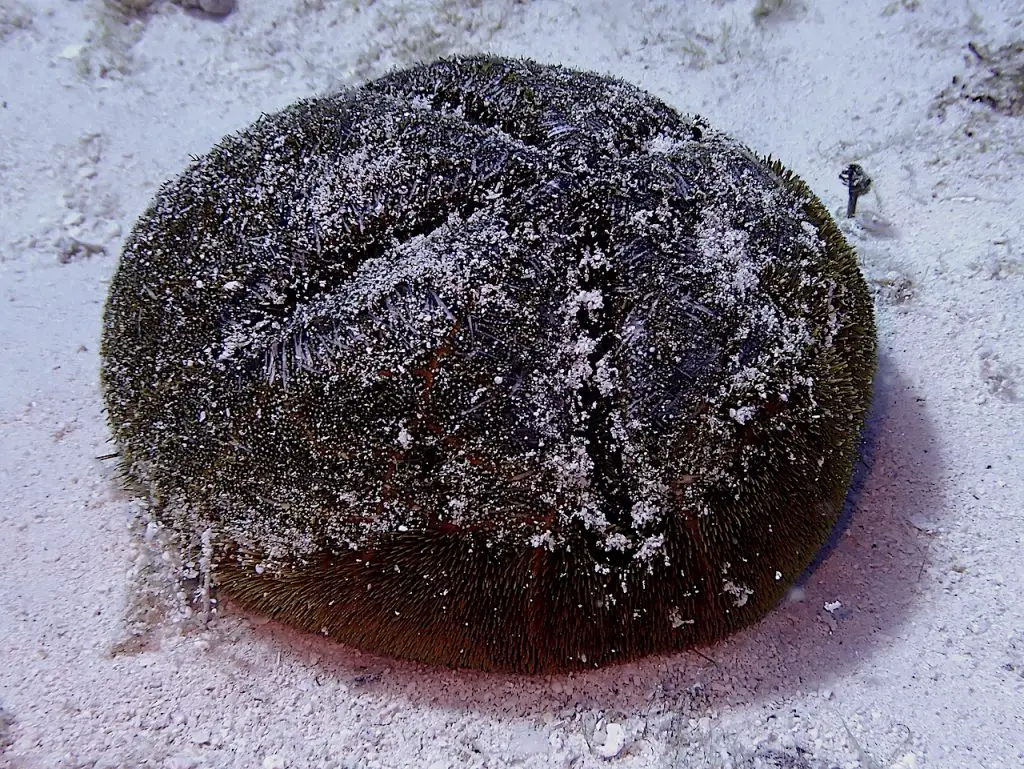
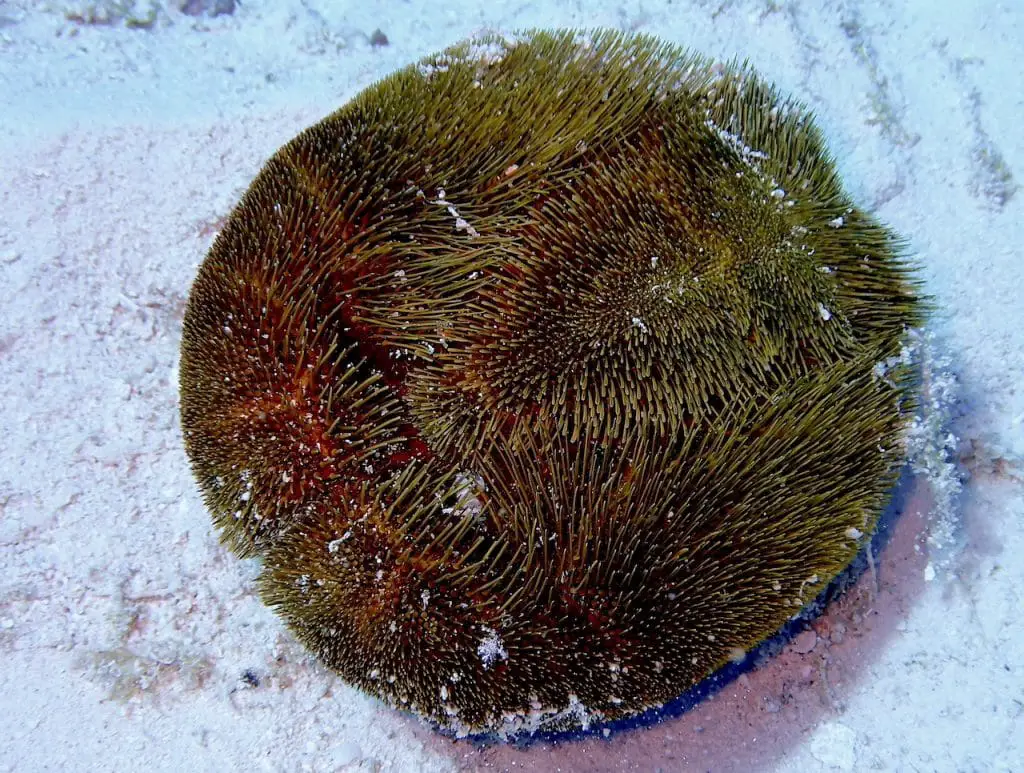
An interesting fun fact about the red heart urchin’s spines is that they often serve as “hosts” for tiny white pea crabs.
You can just barely make out one I caught a glimpse of in this picture (see lower left of 2nd image).
Otherwise, it’s far more common to see these urchins’ empty and denuded shells, long after they’ve been (likely) rooted out of their sandy hiding spots by spotted eagle rays, and left behind.
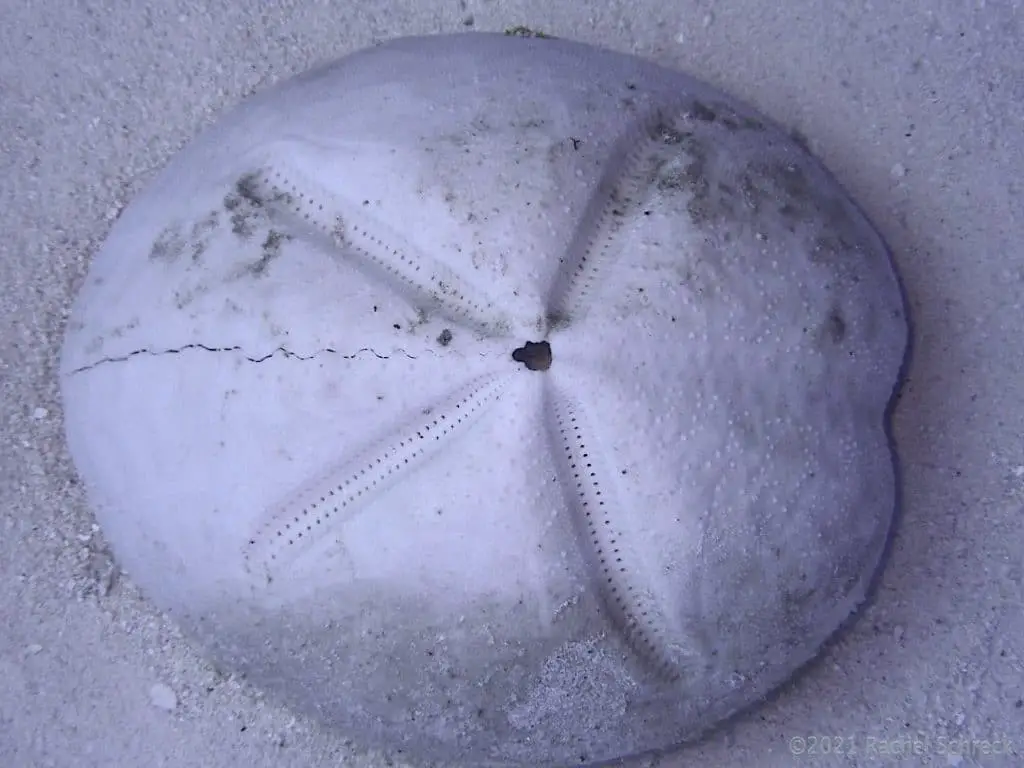
West Indian Sea Egg Urchins
Finally, another variety of urchin I’ve seen and photographed in Cozumel a few times is known as the West Indian Sea Egg (Tripneustes ventricosus).
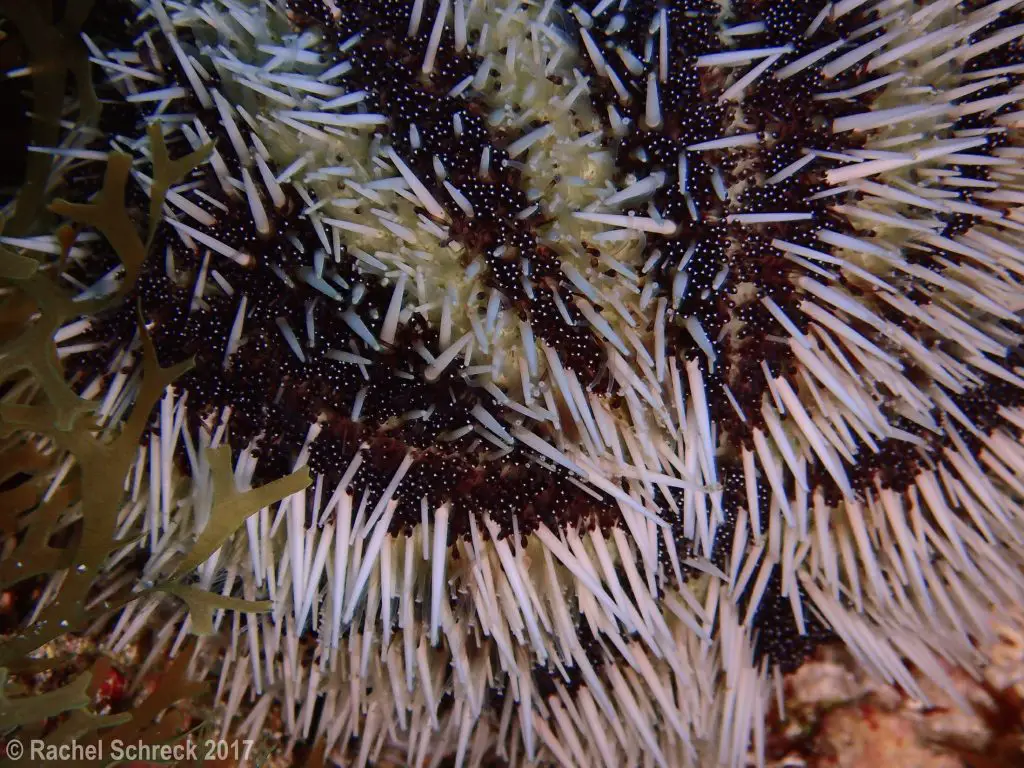
Like the red heart urchin, the sea egg urchin has a ‘puffed up’ looking body, and relatively shorter spines, though as far as I can find out, it does not tend to bury and burrow itself under the sand, but rather hangs out in our large patches of seagrass, or in the sandy areas.
If you intend to try some shore-entry snorkeling, don’t forget to be on the lookout for sea urchins, and mind the safety tips above (including reminders on foot protection), and those in this related post for new snorkelers in Cozumel.
And for more on some of Cozumel’s cool sea life, check out the post on our unique resident and underwater mascot, the Cozumel Splendid Toadfish, and many other articles in the blog under the category of “Cozumel Diving.”
One popular one lately is the Full Guide to Cozumel’s Sea Turtles, where you can check out which turtles you’ll likely see diving, and also when and how you might see the baby turtle hatchlings that nest on the island each year.
- Easy to use
- Easy to pack
- Easy on the wallet
- Durable, waterproof, dustproof
Learn those critters!
Learn more about Cozumel's fish - including sharks, rays, and eels
